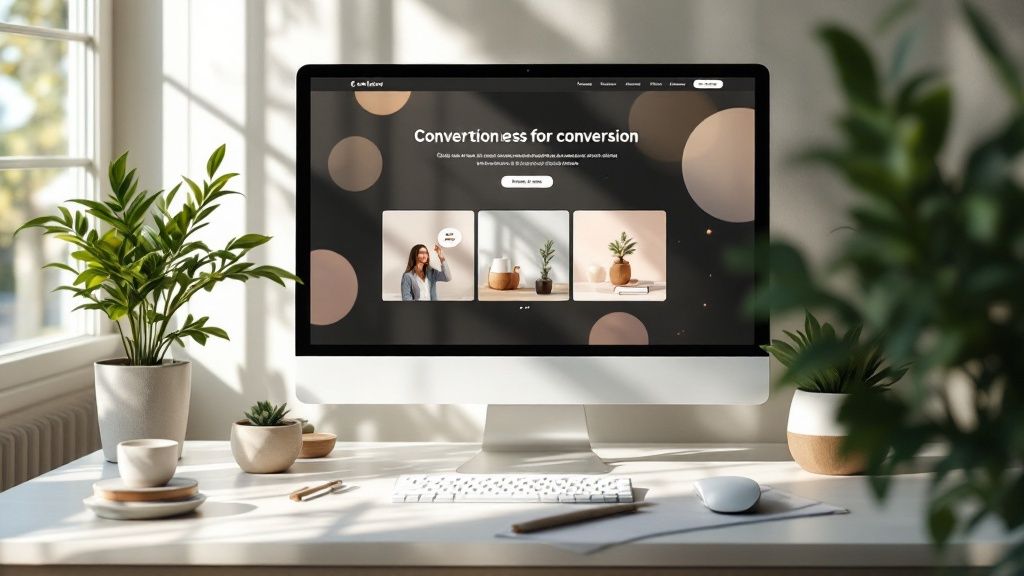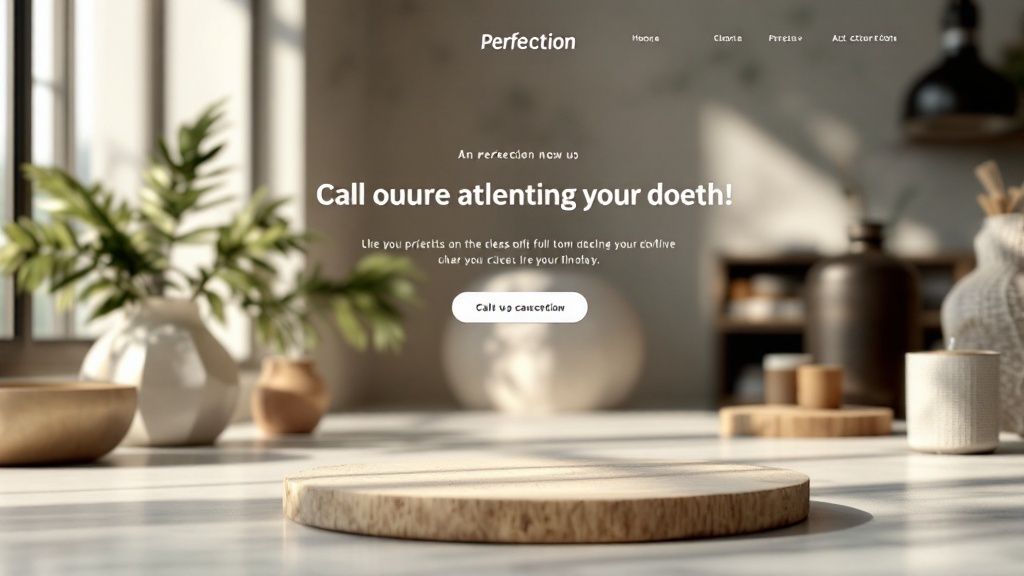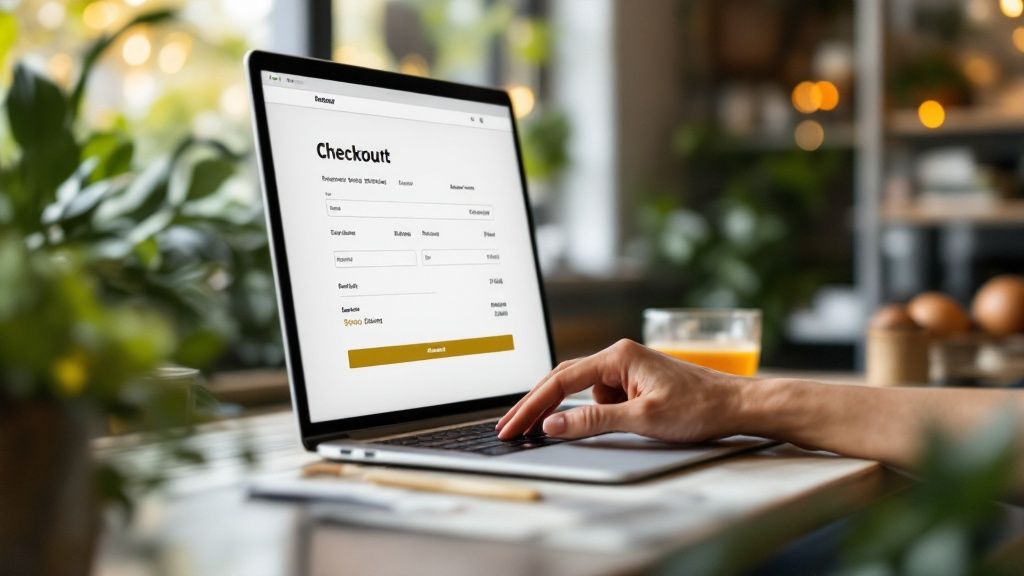Website Conversion Rate Optimization: A Data-Driven Guide for Digital Success
The Evolution of Conversion Rate Optimization

Conversion rate optimization (CRO) has come a long way from its retail store origins to today’s data-driven digital strategies. In the pre-internet days, businesses tracked conversions through foot traffic in physical stores. For example, a clothing store in the 1980s might see that from 100 visitors, about 20 would try on clothes and 10 would buy something - giving them a 10% conversion rate. Store owners relied on careful observation, manual tracking, and their understanding of customer behavior to improve sales. Learn more about early conversion tracking methods here.
From Traditional to Digital
The rise of digital commerce brought major changes to how businesses optimize conversions. Digital analytics tools now give companies instant access to customer behavior data and testing results. This shift enabled businesses to make quick, informed decisions based on real numbers rather than gut feel. Companies can now test different website versions, personalize content, and measure results with scientific precision.
Merging Tradition with Innovation
Smart companies today combine proven sales psychology with modern digital tools. Rather than abandoning what worked in stores, they’re adding new technology to boost results. Some effective examples include:
- Using scarcity and urgency messaging in email campaigns
- Building trust through customer reviews and ratings
- Creating personalized shopping experiences with customer data
Looking Ahead
Website conversion optimization keeps evolving as new tools emerge. The key is finding the right mix of time-tested sales principles and modern technology. Success comes from understanding both human psychology and digital capabilities - then using that knowledge to exceed customer expectations and drive more sales.
Setting Strategic Conversion Benchmarks

Getting your website conversion rates right starts with establishing clear benchmarks. Recent data shows that conversion rates vary significantly across devices and industries. Desktop sites convert at 4.14% on average, while mobile trails at 1.53%. The typical range for e-commerce sits between 2% to 4%, though agencies often see rates around 1.7%. Learn more about industry benchmarks from Speed Commerce.
Understanding Your Market
Each industry has its own conversion patterns. Software companies often achieve higher rates than traditional retail businesses with online stores. By studying how your specific sector performs, you can set realistic goals that make sense for your business.
Crafting a Targeted Approach
To build an effective conversion optimization plan, focus on:
- Finding Value Sweet Spots: Look for pages and user paths that drive the most valuable conversions
- Testing and Learning: Use A/B testing to discover what truly works for your audience
- Measuring Progress: Track key metrics consistently to guide improvements
Benchmark Best Practices
Successful companies follow these core principles:
- Clear Goals: Set specific conversion targets that your team can work toward
- Market Research: Keep up with industry changes and adjust your goals when needed
- Regular Reviews: Check your progress monthly and make needed adjustments
By taking a practical approach to benchmarking and staying focused on what matters to your business, you can steadily improve your conversion rates over time. Remember that good conversion optimization is about making steady progress rather than chasing unrealistic targets.
Building Technical Foundations for Conversion Success
A well-functioning website is essential for turning visitors into customers. Like building a home, having beautiful design elements won’t matter if core technical elements are weak. This section explores how strong technical performance creates smooth user experiences that boost conversions.
The Importance of Site Speed
Site speed has a huge impact on whether visitors stay and convert. When pages load slowly, users leave before seeing your content - directly hurting your conversion rates. The data shows clear benefits: making your site just one second faster can boost conversions by 7%. Sites loading in under two seconds see 15% higher conversion rates. For mobile users, each extra second of load time drops conversions by 20%. See more stats at Shopify’s CRO research.
Optimizing for Mobile
Most web traffic now comes from phones and tablets, making mobile optimization essential. Your site needs responsive design that works on all screen sizes, properly sized images, and clean code for fast loading. Getting the mobile experience right is key for capturing conversions from smartphone users.
Prioritizing Technical Improvements
Some technical issues affect conversions more than others. Focus first on changes that most improve user experience and drive results. Common high-impact fixes include repairing broken links, compressing images, and making navigation more intuitive.
Measuring the Impact
Track how technical improvements affect key metrics like bounce rate, page load time, and conversion rate. This data shows which changes work best and helps refine your optimization strategy. Regular monitoring helps create a site that not only draws visitors but turns them into loyal customers.
Mastering User Experience for Higher Conversions

Think of your website like a physical store - even with perfect construction and fast service, customers won’t buy if they can’t easily find what they need. Creating an excellent user experience (UX) is essential for turning visitors into customers. Let’s explore how to build a website that guides users smoothly toward making a purchase.
Creating Clear Purchase Paths
A good website makes it simple for visitors to find what they want. Use clear navigation labels and add a prominent search bar to help people browse efficiently. Include breadcrumbs so users can track their location and easily go back if needed. When you remove obstacles from the shopping journey, visitors are more likely to explore and buy.
Writing Effective Action Buttons
Your calls to action (CTAs) need to grab attention and prompt clicks. Skip generic button text like “Submit” - instead use specific phrases like “Get My Free Quote” or “Download Now.” Place these buttons strategically near relevant content where users are most likely to click. Test different versions to see which ones get the best response from your audience.
Building Pages That Convert
Landing pages need to focus visitors’ attention on taking action. Include an attention-grabbing headline that clearly shows the value you offer, followed by persuasive but concise copy. Keep the design clean and remove distracting elements. Make your form or main CTA button prominent and easy to find. The simpler the path to conversion, the better your results.
Learning From User Behavior
Study how people actually use your website to improve the experience. Tools like heatmaps show you where visitors click and scroll most often. This data helps you optimize button placement, simplify navigation, and clarify confusing content. Keep testing and refining based on real user behavior - improving your website is an ongoing process of measuring what works and making it even better.
Implementing Data-Driven Testing Strategies

Testing based on real data helps improve your website’s performance and conversion rates. Instead of making changes randomly, you can use actual visitor behavior to guide your website improvements. This leads to better results since decisions are based on facts rather than assumptions.
Designing Effective Tests
Start by setting a clear goal for what you want to achieve. For example, do you want more email signups or increased sales? Then identify specific parts of your website that could affect reaching that goal, like where buttons are placed or how long forms are. Having clear goals and test elements helps you get meaningful insights.
A/B Testing: A Simple Yet Powerful Method
A/B testing lets you compare two versions of a page to see which works better. You create version A (current) and version B (modified), then split your traffic between them equally. For instance, you might test two different headlines on your landing page and track which one gets more leads. This simple method reveals what your visitors prefer.
Multivariate Testing: Testing Multiple Changes
Going beyond A/B testing, multivariate testing lets you try several changes at once. You could test different combinations of headlines, images, and buttons on one page. This helps find the best mix of elements that get visitors to take action. Keep in mind you’ll need more website traffic to get reliable results.
Analyzing Results and Iterating
After running tests, look at the numbers to see what worked best. Check if version B did better than A, or which combination of elements connected most with visitors. Make sure your results are solid before making changes. Keep testing and watching results over time to keep improving as visitor preferences change.
Building a Sustainable Testing Program
Improving your website conversion rate takes ongoing work. Make a schedule for regular testing and focus on changes that could make the biggest difference. Keep track of what you learn from both successful and unsuccessful tests. For example, a restaurant could regularly test different ways to show their menu to increase online orders. A local business might try various appointment booking buttons. This steady approach to testing helps websites keep getting better results.
Preparing for the Future of Conversion Optimization
Website conversion optimization keeps evolving with changing technologies and user habits. To stay competitive, businesses need to learn what works, adapt their strategies, and plan ahead.
Using AI for Better Results
Artificial intelligence and machine learning can improve how we optimize websites. These tools analyze user data and behavior much faster than traditional methods. AI helps customize web content for each visitor and can power chatbots that guide users through their purchase journey.
Adapting to Privacy Changes
More users care about their data privacy, and new regulations affect how businesses collect information. Being open about data practices and following privacy laws like GDPR and CCPA is essential. Businesses that protect user privacy and earn trust tend to see better conversion rates.
Creating a Flexible Strategy
To adapt smoothly to changes, focus on:
- Regular Testing: Run A/B tests on website elements like headlines and buttons to find what works best
- Data-Based Choices: Use analytics to understand user behavior and spot areas to improve
- Learning New Tools: Stay updated on useful technologies and test them when they make sense for your goals
Smart Ways to Add New Tech
When adding new tools to your strategy, follow these steps:
| Step | What to Do |
|---|---|
| Research | Learn about the tool and how it could help your business |
| Test Run | Try it on a small scale first to see if it works |
| Review | Look at the results and note any issues or benefits |
| Add It In | Connect it with your current systems if the test goes well |
| Watch | Keep checking how it performs and make changes if needed |
Good conversion optimization means staying flexible and ready for change. Focus on using AI wisely, respecting privacy, and building a strategy that can adapt easily.
Need help growing your online business? GWC helps small businesses and personal projects succeed online. We offer custom solutions for SEO, social media, and websites that bring in more visitors and sales. Learn more at GWC.